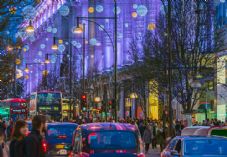UK DIY News
Sustainable Housing Design
There’s a lot to consider when building a home. Sustainability is one of the most important factors. This guide will explore how sustainability and design interlink, and explain how you can use reclaimed materials and other eco-friendly measures when designing and building a home.
What is sustainable design?
Sustainable design consciously takes steps to reduce any negative impact on the environment, while still taking the needs and quality of life of the building occupants into account. It’s the best of both worlds.
A sustainably designed building takes the following into account:
- Energy consumption. Can renewable energy providers be used? Is there a way to incorporate renewable energy generators such as rooftop solar panels, a wind turbine, air source heat pumps or hydroelectricity into the design?
- Materials and products. Can materials and products which have less impact on the environment be used? For example, is there a way to give reclaimed materials a second life?
- Water conservation. Is there a way less water can be used, both throughout the building process and once the property is inhabited?
- Waste. Can the amount of waste produced during the building process be minimised? Is any of the waste able to be reused or recycled, rather than sent to landfill?
Reducing waste throughout the process doesn’t just mean using fewer materials. It also refers to eliminating any unnecessary use of land, time and money.
Sustainable house design
Designing and building a house is a huge but rewarding undertaking. You can make the process smoother by planning carefully from the start.
1. Is building the house necessary?
There may be instances where refurbishing an existing building is possible, without sacrificing any of your goals for the new property.
2. Are you able to build it on a brownfield site?
A brownfield site has previously been developed. The structure may still exist, or it may have been torn down. A greenfield site hasn’t been developed before, and may be made up of grasslands, woods or farm fields.
| Pros of using brownfield sites | Cons of using brownfield sites |
| They’re often in cities or towns, so it’s likely the infrastructure needed already exists | It can be expensive if decontamination is required |
| Building on these sites can improve a neighbourhood, both visually and economically | The availability of brownfield sites vs. the demand for housing doesn’t always match up |
| Natural environments are left alone, preserving plants, trees, wildlife and their habitats |
3. Waste reduction
By calculating what you’ll need at this early stage, you can dramatically reduce the amount of waste produced throughout the building process.
4. Construction
Do the firms you’re working with have practices that take environmental impact into account? Are they willing to communicate with you about sustainability? The process will be smoother if you’re all on the same page.
5. Energy use
Energy use encompasses the energy required during the construction phase, as well as the energy used once the home is occupied.
- Construction: Energy use during the construction phase covers manufacturing the materials, the emissions produced while transporting them to the site, and the actual building work.
- Occupancy: The way the house is heated or cooled is an important consideration, especially in the UK where heating is required during the colder months. Insulation can dramatically improve energy efficiency by preventing heat from escaping through the roof, walls or windows. Natural lighting should also be taken into account. Rooms with more natural light will require less electric lighting.
6. Water use
Measure water use meticulously during the building stage, as this can prevent excess water going to waste, saving both resources and money in the long-run.
You can also take steps to ensure the occupants of the house use less water in their day-to-day lives.
- A water meter will help residents to monitor their use and reduce their bills, as the amount used each month will be more accurate.
- A low-pressure showerhead saves energy without compromising on the quality of the shower.
- A Hippo bag placed in a toilet cistern reduces the amount of water flushed away by up to three litres. You can also install a low-flush toilet, which only use two or four litres per flush.
- Aerator taps add air into the water, reducing the amount used, without changing the flow.
- A water butt outside the property can collect rainwater, which can be used to water plants or flush the toilet.
7. Pollution
Pollution can come from a number of sources, for example:
- Waste produced during the building process. Reduce this by disposing of it correctly.
- Vehicle emissions. Can multiple people travel to the site in one vehicle? Does the construction firm you’re working with have access to electric vehicles?
- Noise. Are there any ways to minimise this throughout construction?
8. Biodiversity
How can you protect local wildlife habitats? Can you do anything to enhance them – like incorporating them into the garden, for example?
9. People
From the workers building the house to the residents in the local area, how can you be considerate of them throughout the project?
Building a house with reclaimed materials
Reclaimed materials are any materials that have been used before, in buildings or otherwise, which are then re-used in construction.
Examples of reclaimed materials include salvaged floorboards, doors, windows, bricks, beams, cabinets, decor and shipping pallets. There are numerous ways to incorporate them into a house design.
Flooring
Some flooring can be relaid in the new build, while some might not be in good enough condition to be walked over, but could be used for another purpose.
Doors
While exterior doors are best made new to ensure the highest energy efficiency, you can reuse old interior doors when building a property. Some will look great as they are, and some will need sandblasting to remove old paint.
Choose your reclaimed interior doors before you create openings for them, as they can come in a variety of different sizes.
Windows
Old windows can be used as a feature inside a home, or to build a greenhouse outside. They’re not normally very energy efficient, so it’s best to install new, double or triple glazed windows in the exterior walls.
Bricks
Reclaimed bricks are relatively easy to get hold of, with sites like Ebay, Craigslist and Freecycle all good places to start. The bricks must be cleaned before they can be used.
Be discerning when choosing your reclaimed materials. If in good condition, they can last for years and save a lot of resources. If not, they’ll only create more waste and more bills further down the line.
You can browse the internet for further sustainable house design ideas, picking the elements that suit you and your project.
The future of sustainable design
Demand for sustainable design is only increasing. People want secure, accessible housing that won’t be detrimental to their health or the environment around them. Therefore, it makes sense to take sustainability into account as soon as possible, if you haven’t already. It will lower costs and improve the longevity of housing.
Source : Stanmore
Image : Petmal / iStockphoto.com (538895150)
Thank you for the excellent presentation that you gave at Woodbury Park on Thursday morning. It was very interesting and thought-provoking for our Retail members. The feedback has been excellent.











































